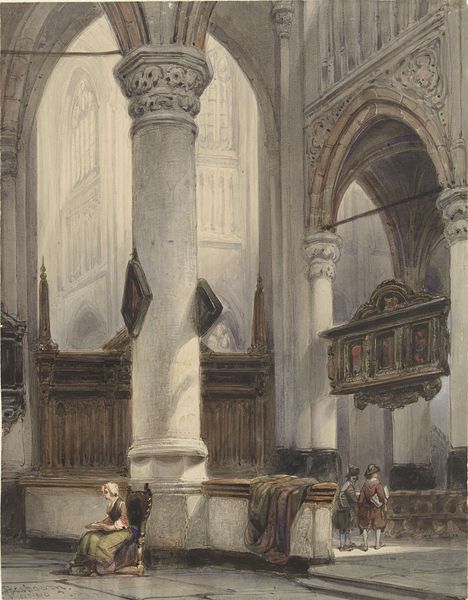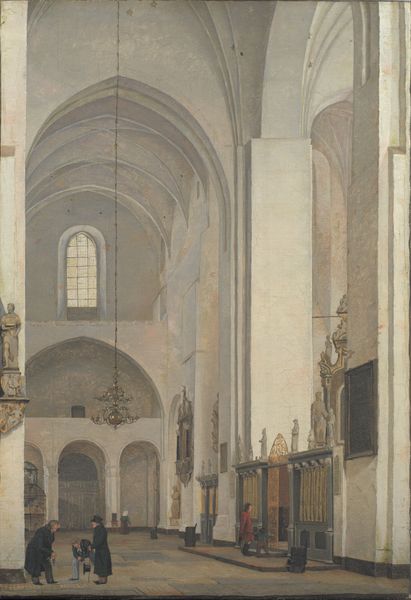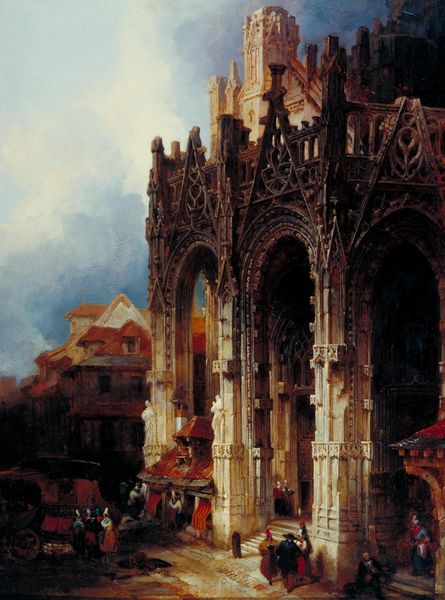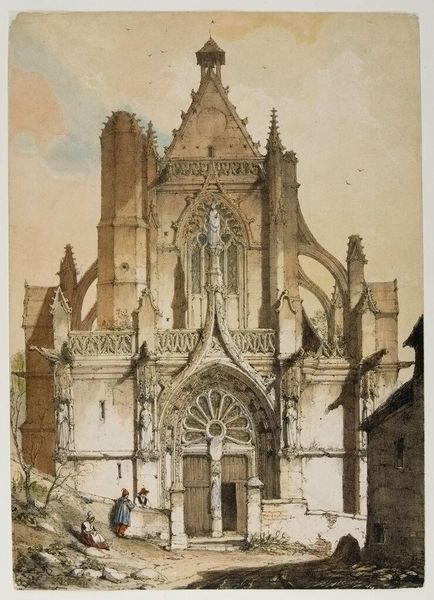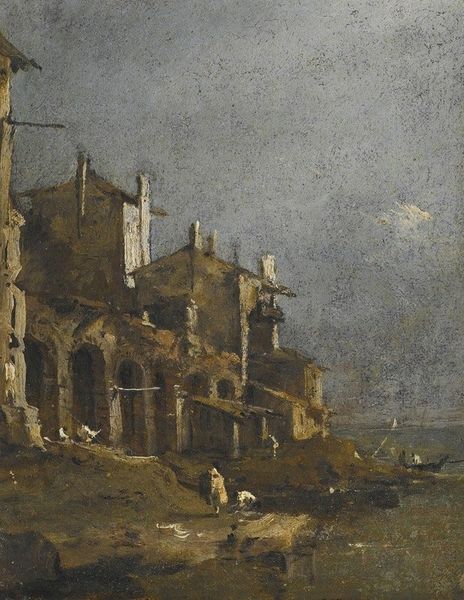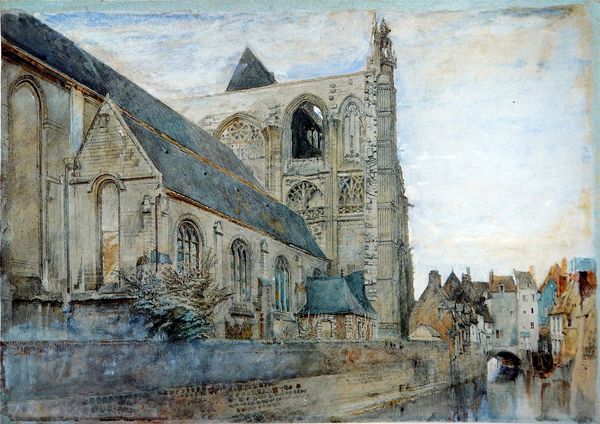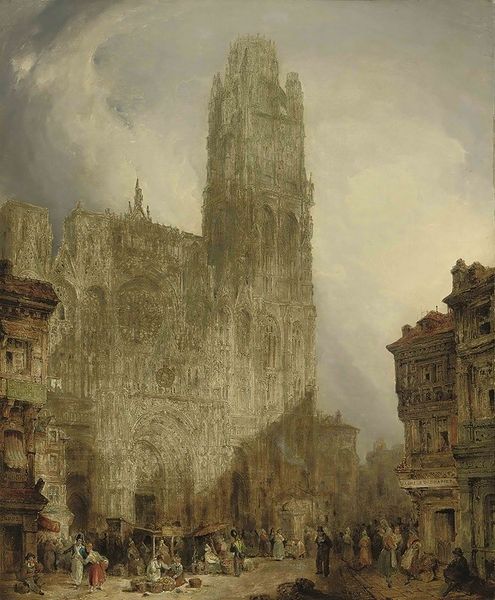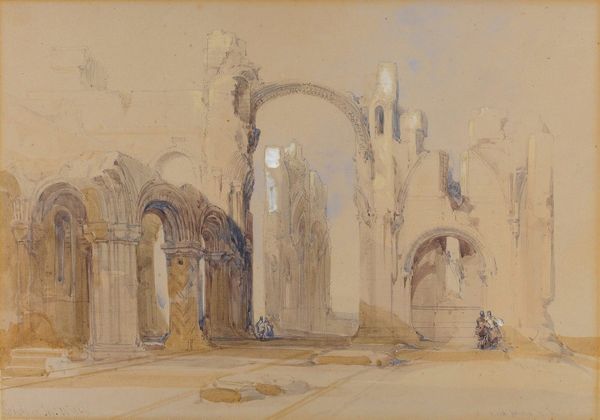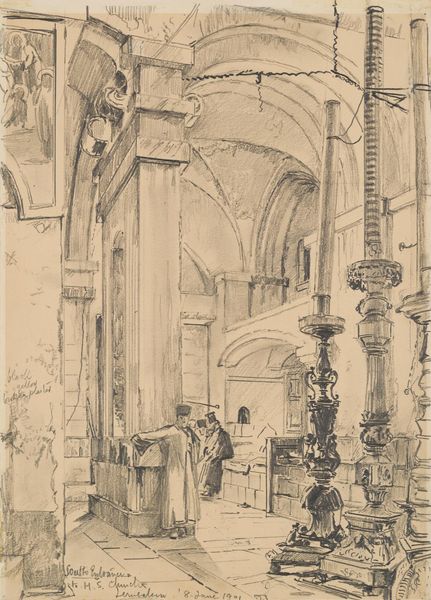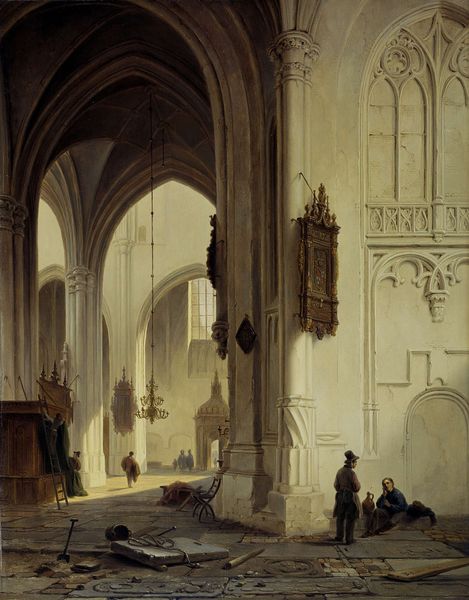
watercolor
#
neoclacissism
#
landscape
#
romanesque
#
watercolor
#
cityscape
#
history-painting
#
watercolor
Copyright: Public Domain: Artvee
Editor: So here we have Hubert Robert’s watercolor, *L’Eglise des Feuillants en démolition,* painted in 1804. It feels…melancholic. What strikes me most is how even in destruction, the architectural structure has an imposing quality. What do you see in this piece? Curator: Ah, yes. Hubert Robert, "Robert of the Ruins," as some affectionately called him. I see not just demolition, but a potent symbol. This isn’t merely the end of a building; it's the fading echo of an era. The French Revolution has roared through, and even the stones whisper of change. It almost seems as if Robert asks us, "What do we build upon these ruins? And at what cost?" Editor: So, beyond the literal destruction, there’s a sense of societal upheaval baked right in? Curator: Precisely. Think about it. Robert witnessed this firsthand, and nearly lost his head (literally!) during the Terror. He understood the weight of history. He understood how easily grand structures—be they buildings or societal systems—could crumble. What stories are hidden in those stones, I wonder? Did lovers meet in the shadows of those arches? Were oaths sworn? Editor: Wow, I didn’t think about the more personal, intimate lives impacted by such a grand event. That perspective really shifts my view! Curator: Doesn't it always? It’s a powerful piece because it’s not just about what's being destroyed but about memory. Editor: This makes me realize that every ruin is a story, waiting to be interpreted. Curator: Exactly! The beauty of art. We each bring our own story to the rubble.
Comments
No comments
Be the first to comment and join the conversation on the ultimate creative platform.
